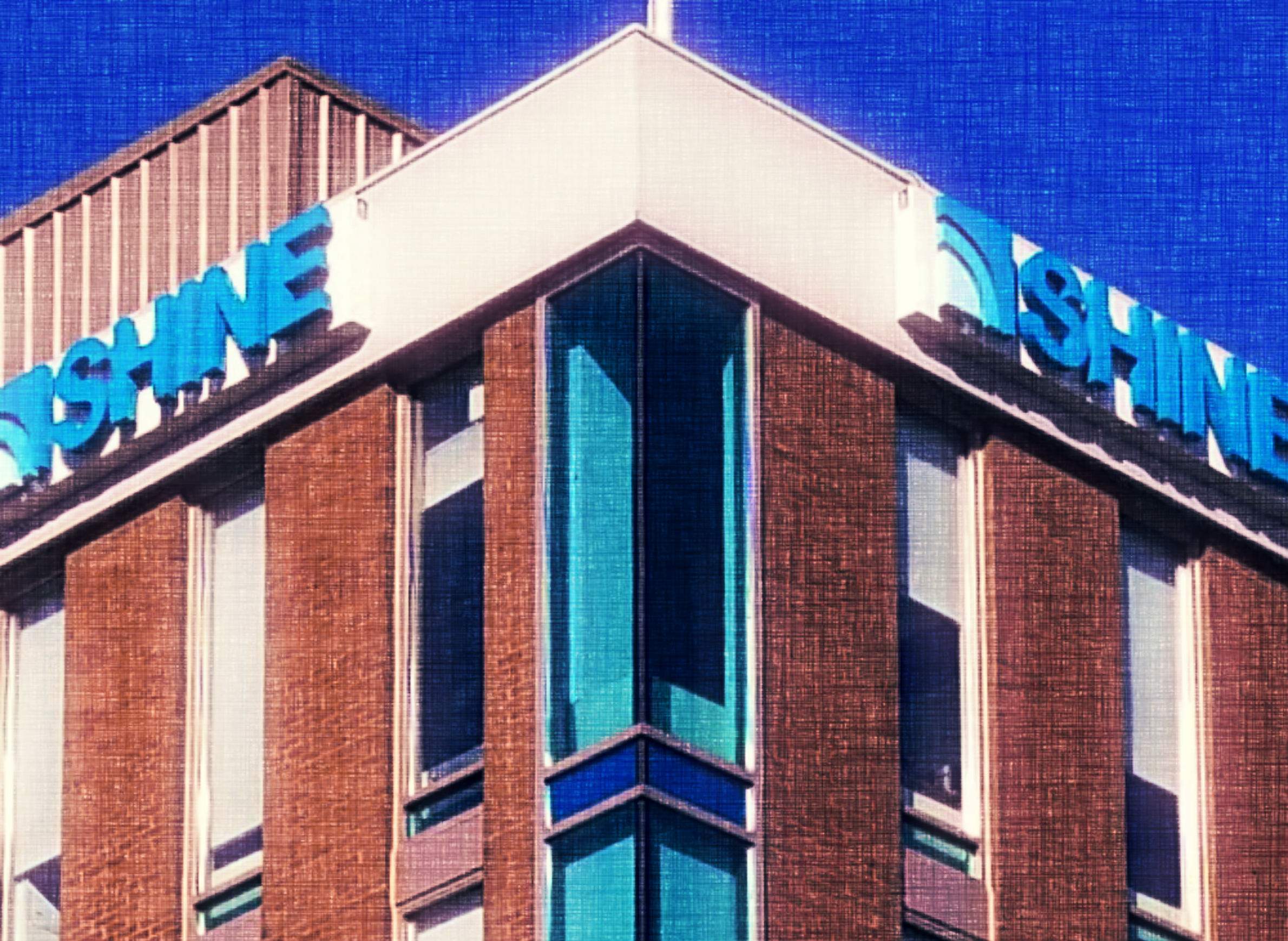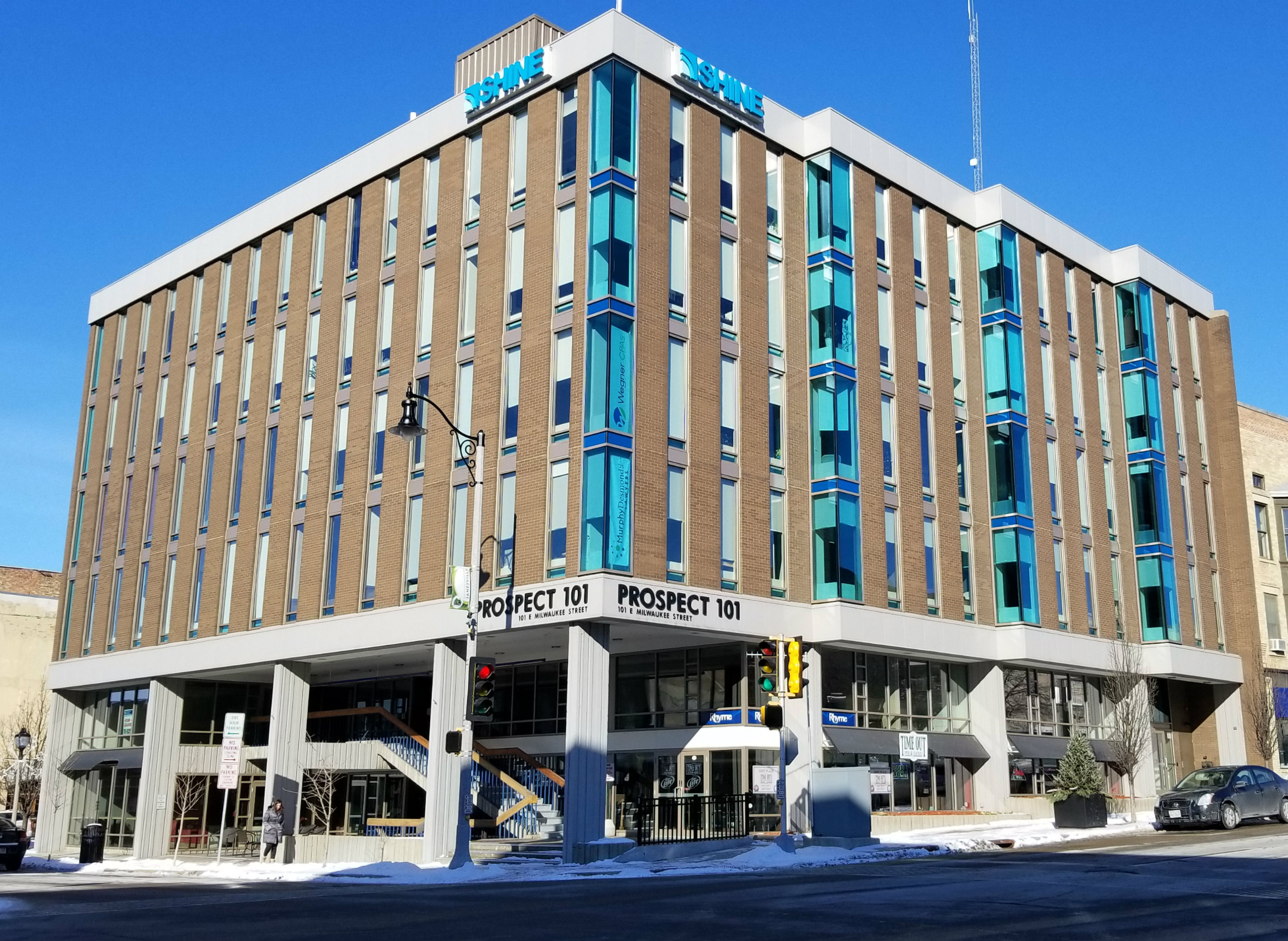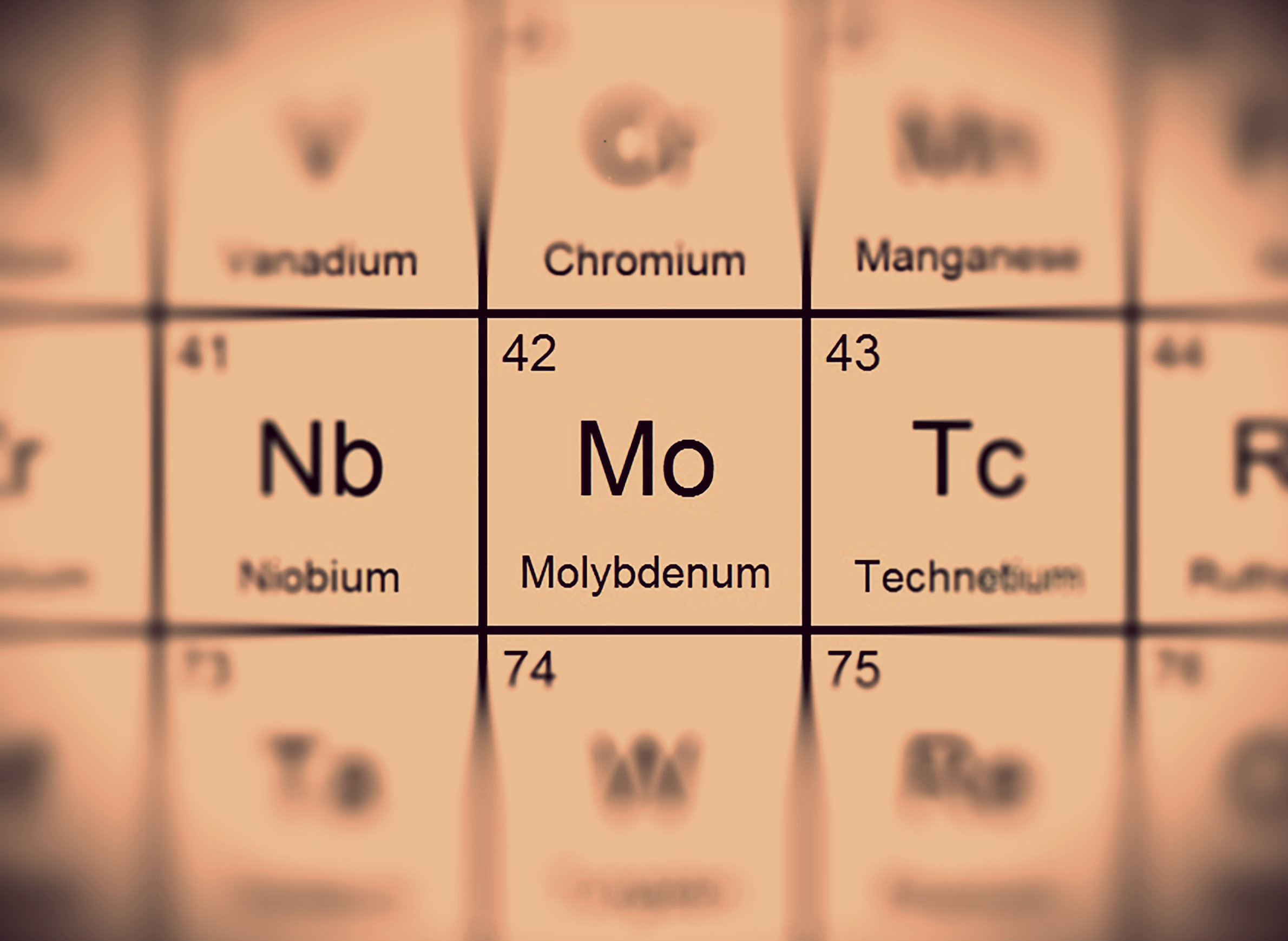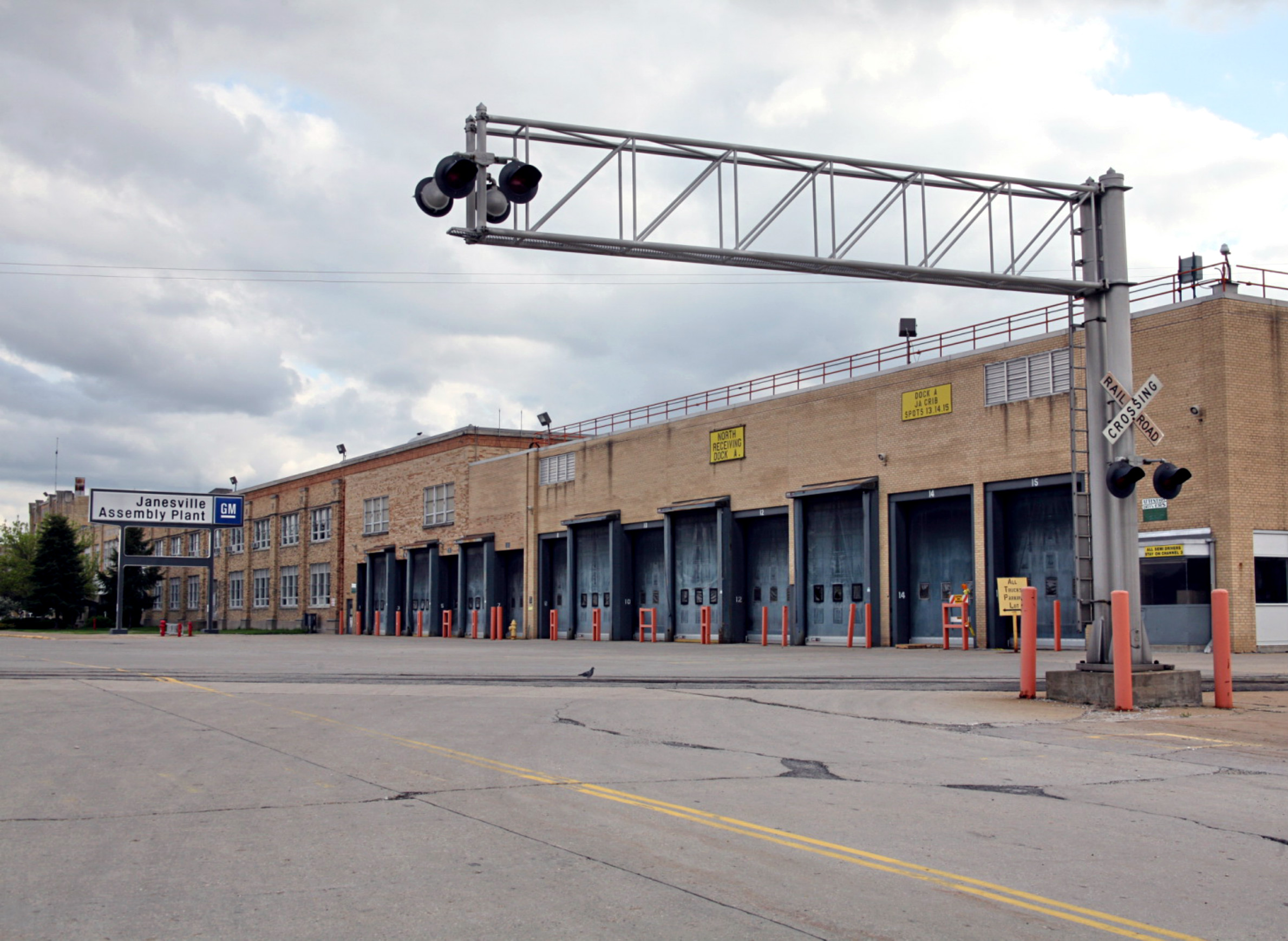
In Rock County, Hopes Rise For The Business Promise Of Nuclear Medicine

In a cornfield here, past the shuttered General Motors plant and the Janesville Terrace trailer home park, a facility not seen in the United States in three decades could soon rise: a manufacturing plant that will make a vital radioactive isotope used to detect cancer and other potentially fatal maladies in millions of people every year.
Nuclear medicine imaging, a staple of American health care since the 1970s, runs almost entirely on molybdenum-99, a radioisotope produced by nuclear fission of enriched uranium that decays so rapidly it becomes worthless within days. But moly-99, as it's called, is created in just six government-owned nuclear research reactors — none in North America — raising concerns about the reliability of the supply and even prompting federal scientists to warn of the possibility of severe shortages.
Some 50,000 Americans each day depend on a strange and precarious supply chain easily disrupted by a variety of menaces: shipments grounded by fog in Dubai, skittish commercial airline pilots who refuse to carry radioactive material and unplanned nuclear reactor shutdowns, including one in South Africa when a mischievous baboon sneaked into a reactor hall.
Delays that pose an inconvenience for other commercial goods are existential threats in the daily global relay race of medical isotopes that disappear hour by hour. "It's like running through the desert with an ice cream cone," said Ira Goldman, senior director of global strategic supply at Lantheus Medical Imaging in North Billerica, Mass.
But that race may soon be shortened. Propelled by persistent supply problems and fears that terrorists could seize American uranium en route to foreign facilities, President Barack Obama signed legislation in 2013 prodding American companies into the medical-isotope business.
The $100 million Janesville plant, in the hometown of Rep. Paul Ryan, speaker of the House, is the first construction project to pass through the labyrinthine nuclear regulatory approval process since 1985 and is being built by SHINE Medical Technologies with $25 million in federal funds.
Greg Piefer, the company's founder and a nuclear engineer (he drives a Tesla with the license plate "NEUTRON"), has big plans for the cornfield: a plant that could manufacture up to 50,000 doses of imaging agent a week. "Ryan called me out of the blue and he said, 'We really want you here,'" Piefer said.
Still, it could be years before moly-99 is manufactured in the United States. SHINE still needs more money to complete its manufacturing plant, and investors are wary of the many problems that can arise during construction. Already, construction deadlines promised by SHINE have come and gone. Other competitors, meanwhile, that received tens of millions of dollars in federal grants to build their own moly-99 manufacturing plants have been thwarted by protracted drug approvals and nuclear regulatory hurdles, and some have given up.
European rivals have also cautioned the American upstarts. At industry presentations, Goldman said, the producers have warned, "This is more difficult than it looks. You can't come up with a fancy slide that says, 'I'm going to be producing moly-99 in a couple of years.'"
Birth of an isotope
The radioactive isotope injected into the veins of potential heart attack victims or bone cancer patients begins its journey in the heavily guarded American nuclear stockpile.
The Department of Energy's National Nuclear Security Administration ships Cold War-era uranium overseas, where the containers — sought by terrorists for dirty bombs — are secretively trucked to government-owned nuclear research reactors in the Netherlands, Belgium, Czech Republic and Poland. (South Africa and Australia also use American uranium to produce moly-99 in research reactors.)
Private companies rent time in the reactors to irradiate enriched uranium targets, producing an atomic alphabet soup. Nearby processing facilities fish out the moly-99, and the radioactive material is loaded onto commercial airline flights bound for the United States in protective containers.
Three companies dominate the American market for moly-99 — Lantheus, Curium and GE Healthcare. They distribute the material to specialized pharmacies around the country, where technicians process it into a diagnostic imaging agent called technetium-99. The companies work against a ticking clock: Because of its short half-life, just 66 hours for moly-99 and six hours for the imaging agent, the material must be quickly delivered to hospitals and administered to patients.
"The whole industry is like a duck going on a fast-flowing river," said Kevin Charlton, an analyst at the Organization for Economic Cooperation and Development's Nuclear Energy Agency in Paris. "On the surface, it looks like things are going very smoothly, but under the water, their legs are going really fast."
Countless things can go wrong, starting with the first step.
The worldwide supply of moly-99 relies on a fleet of government-subsidized nuclear research reactors built mostly during the Khrushchev-Eisenhower era.
Regular maintenance and major repairs can shutter the reactors, sometimes for months, and so-called scrams — caused by anything from a hiccup in a reactor's cooling system to an errant lightning strike — frequently halt production. "It's a nuclear reactor," Charlton said. "The only thing you can do is shut it off."
Even the Mayo Clinic in Rochester, Minn., a prestigious cancer treatment center, can be left waiting for shipments of the generators that contain the imaging agent. "We've had days when no generator comes in at all, or it's been cut in half," said Andrew Paulsen, supervisor of the clinic's radiopharmaceutical laboratory.
And the ephemeral nature of moly-99 always looms. On a recent afternoon, inside a locked laboratory at Stanford Hospital's nuclear medicine department in Palo Alto, Calif., a technician held a lead-lined, plastic cylinder containing a syringe of fragile atoms that had traveled around the globe.
Once the imaging agent is injected into a patient's body, it emits gamma rays that can be detected by gamma cameras that look like X-ray machines. The radioactive tracer lights up on a computer monitor wherever the heart's blood vessels are blocked or bones are riddled with potentially cancerous tumors. The imaging agent was first used in medical applications in the 1960s because its short half-life meant that patients were getting less exposure to radioactivity than from other diagnostic tracers.
But at Stanford's nuclear medicine department that day, a patient had missed his appointment. This meant the dose — which cost the hospital an irretrievable $500 — had decayed and was now useless. The technician threw the syringe in the trash.
The supply chain's vulnerability, acutely felt during a severe worldwide shortage in 2009 and 2010 when two reactors shut down unexpectedly, has led some doctors to shift to more dependable, but more toxic, imaging agents. "For cardiac imaging, we had to shift to a more expensive agent and expose patients to more radiation," said Dr. Andrei Iagaru, chief of the division of nuclear medicine at Stanford Health Care.
After the worldwide shortage, the volume of nuclear medicine tests went down, and stayed down. "It definitely had an impact on the way many practices run their cardiac stress tests," Iagaru said.
Depending on other countries
American patients consume nearly half of the world’s supply of moly-99. And despite plans to ramp up production in Australia, reactor construction is notoriously tricky. In addition, reactors that are converting for security reasons to low-enriched uranium have lower yields and more waste, according to nuclear scientists.
Concerns about moly-99 shortages heightened in October 2016, when the Canadian government mothballed a reactor in Chalk River, Ontario, that supplied about 40 percent of the American market. The government's decision to shutter the plant was, in part, due to frustration that Canada had had to spend $70 million in 2009 to repair the facility — in effect, subsidizing the American health care industry. That is a complaint of European governments as well.
William Magwood, director of the Nuclear Energy Agency in Paris, said that moly-99 production at Chalk River "went from being incidental to being the only reason to operate the reactor."
"Canadians didn't want to continue to operate a high-cost reactor to sell isotopes to the U.S.," he said.
Some European governments have begun charging moly-99 producers higher rates to rent reactor time, and prices are expected to rise sharply when governments strip for-profit companies of subsidies originally meant to support academic research.
"How much will get passed on to the health care providers?" said Leah Gannon, senior portfolio executive of radiopharmaceutical distribution sourcing for Vizient, a company that negotiates contracts for hospitals. "Probably almost all of it."
With no source of moly-99 anywhere in North America, American nuclear medicine specialists appointed by the National Academies of Sciences, Engineering and Medicine warned in a 2016 report commissioned by Congress of a more than 50 percent likelihood of another severe shortage in the coming years.
Moly-99 suppliers refute the report's findings, a position echoed by the Nuclear Energy Agency, which has fostered closer ties among producing nations. Reactor operators, the suppliers say, work closely to stagger maintenance shutdowns to minimize shortages and respond to disruptions in production, and producers have increased the number of uranium targets.
"We're describing a glass that is half-full," Charlton said, "whereas the National Academy of Sciences sees the glass looking half empty."
Still, nuclear medicine physicians and nuclear pharmacists charged with filling patient orders each day say the supply remains fragile, especially for smaller pharmacies where the moly-99 imaging agent can account for 95 percent of their business. "It is inconceivable to believe that an outage will never occur on any of these old reactors in the future," said Dr. Joseph Hung, director of radiopharmaceutical operations at the Mayo Clinic and a member of the government committee.
Wendy Galbraith, a clinical associate professor at the University of Oklahoma College of Pharmacy in Oklahoma City who runs the university's pharmacy, said she frequently doesn’t know if moly-99 is going to be available until the wee hours of the morning. Even when there are no major outages, she said, "it's a scramble."
That uncertainty means delays and on-the-fly triage for patients. "If we have a patient who can wait two days for their cardiac stress test, we'll put them off," Galbraith said.
Suppliers want to tamp down fears about reliability, physicians and pharmacists say, to dissuade them from seeking alternative imaging methods when possible, like positron emission tomography, a costly and complex type of medical scan.
"It's hard to stay relevant in an environment when things are not available every now and then," said Iagaru at Stanford.
Even more troubling, critics say, is the lack of redundancy in the supply chain. Of the four global suppliers, two rely on a single reactor. "If anything goes wrong with the reactors in South Africa and Australia," Dr. Hung said, "it will be déjà vu again like in 2009."
The Wisconsin project
If the United States is to grow a domestic moly-99 supply, it will probably rise from the corn and soybean fields in America's Dairyland.
Rock County, Wis., has become the unexpected home to two of the three companies vying for control: NorthStar Medical Radioisotopes in Beloit, which has been awarded $50 million in federal grants, and SHINE, or Subcritical Hybrid Intense Neutron Emitter, in Janesville.
Backed by $25 million in federal support, Piefer, SHINE's chief executive, has promised to build a nuclear accelerator and produce moly-99 by 2020. (The previous deadline was 2015.) In early 2017, the company opened its headquarters in Janesville above the Time Out Pub & Eatery and down the street from a fishing tackle shop and Speaker Ryan's district office.
Nuclear engineers have moved en masse to Janesville in recent months, decorating their cubicles with hand-painted signs with sayings like, "Think like a proton, stay positive."
Piefer zips along Interstate 90 in his Model S Tesla between Janesville and Monona, a Madison suburb where his research lab, Phoenix Nuclear Labs is located. There, engineers have built a ghostly particle beam that looks like a giant, purple lightsaber.
Eight particle accelerators have been designed for the Janesville plant, which the Nuclear Regulatory Commission approved for construction in 2016. Piefer still needs to raise considerable private capital, a challenge with eager entrants like NorthStar and Nordion, an Ottawa-based company also with aggressive plans to enter the moly-99 market.
"If we don't have significant production soon, we will continue to export highly enriched uranium," Piefer said. "And the National Nuclear Security Administration will have failed their mission."
The city of Janesville is banking on Piefer. Its economy reeling from the closing of the General Motors plant in 2008, the City Council aggressively pursued SHINE with a generous economic development package, besting two other Wisconsin cities.
In 2011, over the objections of some residents opposed to a nuclear facility in the town, the council authorized $1.53 million to buy 84 acres of farmland, which it has agreed to turn over to SHINE for $1. The city has also agreed to pay $345,000 to extend utilities to the site, provide $2 million in forgivable loans and co-sign a bank loan with SHINE for up to $4 million that it would have to pay should the company fail, a first for the city.
Gale Price, economic development director for the city of Janesville, said that although it was unusual to put public money into a startup, the city expected to recoup its investment within 10 years. "That's how we measure whether we're giving away the farm," he said.
Ryan has championed the project and spoke at a celebration marking nuclear regulatory approval. But Piefer said, except for the initial phone call urging him to come to Janesville, Ryan has played no part in the federal grant and construction approvals.
SHINE jumped at the chance at federal money for the private plant. But Piefer isn't solely focused on the need in American hospitals. The company has already announced lucrative deals to ship moly-99 to Chinese hospitals.
But first, it needs to start producing.
"You cannot just open a shop down the street and start nuclear medicine," said Iaragu, of Stanford. "The public comes with an expectation that if my oncologist wants me to get a bone scan, it's not big deal. But the truth is, it's a big deal."
Editor's note: Kaiser Health News is a nonprofit news service covering health issues. It is an editorially independent program of the Kaiser Family Foundation that is not affiliated with Kaiser Permanente. This article was previously published on Jan. 16, 2018.
This report is the copyright © of its original publisher. It is reproduced with permission by WisContext, a service of PBS Wisconsin and Wisconsin Public Radio.





